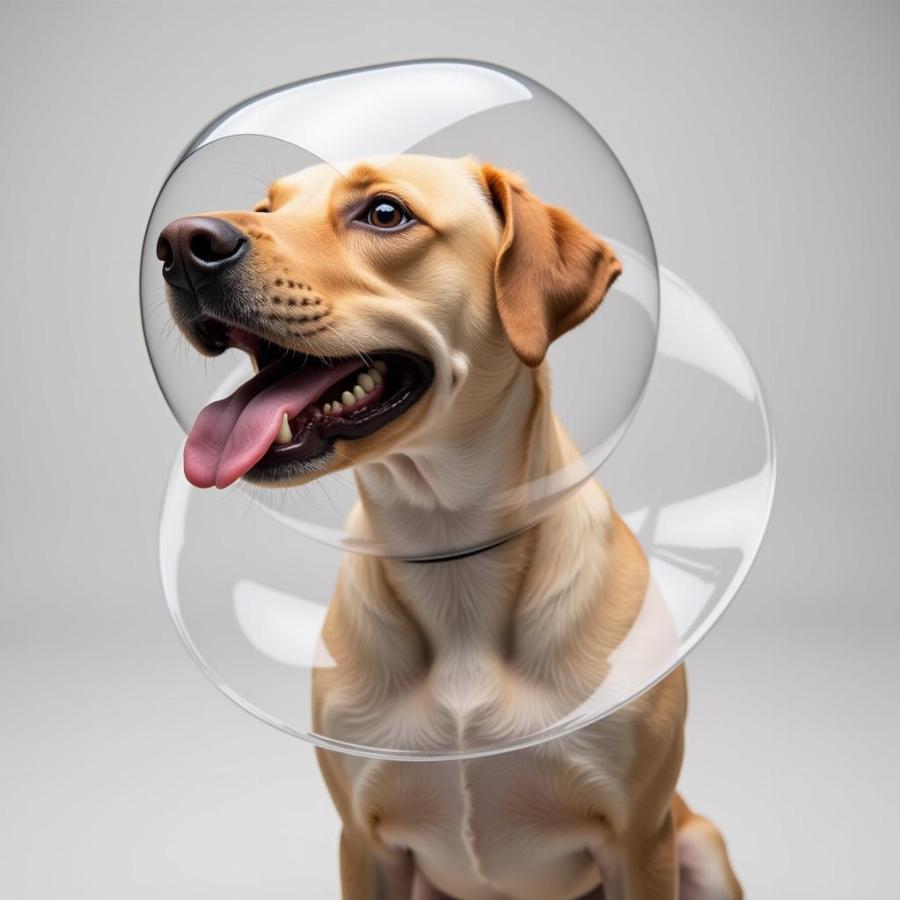Pictures of staph infection on dogs can be quite alarming for pet owners. Recognizing the signs early is crucial for effective treatment. This article will guide you through identifying common symptoms of staph infections in dogs, understanding the causes, and exploring treatment options. We’ll also delve into preventative measures to keep your furry friend healthy and happy.
Recognizing Staph Infection in Dogs: What to Look For
Staphylococcus, often called “staph,” are bacteria commonly found on dogs’ skin. While usually harmless, they can cause infections if the skin’s protective barrier is compromised. This can occur due to allergies, parasites, or other underlying health conditions. Identifying a staph infection early is vital to prevent its spread and minimize discomfort for your pet.
So, what should you look for? Common signs include red, inflamed skin, often accompanied by pustules (pus-filled bumps) or crusty sores. The infected areas may be itchy and painful, causing your dog to lick or scratch excessively. These areas can also be warm to the touch. The infection can occur anywhere on the body but is frequently found on the paws, face, and skin folds.
Different Types of Staph Infections and Their Appearance
There are different types of staph infections, each with slightly varying symptoms. Superficial pyoderma, a common type, typically affects the outer layers of skin, resulting in localized redness, pustules, and hair loss. Deep pyoderma, on the other hand, penetrates deeper into the skin and can lead to more severe symptoms, including abscesses and fever.
Causes and Contributing Factors of Staph Infection
Several factors can contribute to staph infections in dogs. Allergies, both environmental and food-related, can weaken the skin’s defenses, making it susceptible to bacterial overgrowth. Parasites like fleas and mites can also break the skin barrier, creating an entry point for bacteria. Underlying health conditions, such as hormonal imbalances or a weakened immune system, can further increase the risk.
Identifying Underlying Causes: A Crucial Step
Addressing the underlying cause is essential for successful treatment. If allergies are suspected, your veterinarian may recommend allergy testing and dietary changes. For parasitic infestations, appropriate flea and tick prevention is crucial. parasites on dogs skin pictures can help you identify common parasites.
Diagnosis and Treatment of Staph Infections
Diagnosing a staph infection typically involves a physical examination and sometimes skin cultures to identify the specific bacteria involved. Treatment options vary depending on the severity of the infection. Topical antibiotics, such as creams or ointments, are often used for mild cases. For more severe infections, oral antibiotics may be necessary. staph pseudintermedius dog provides more in-depth information about the bacteria commonly responsible for these infections.
Home Care and Management
In addition to veterinary prescribed treatments, there are several things you can do at home to support your dog’s recovery. Keeping the affected area clean and dry is crucial. Regularly cleaning the area with a prescribed antiseptic solution can help prevent further bacterial growth. Elizabethan collars can prevent your dog from licking or scratching the infected area, promoting healing. impetigo and dogs discusses a specific skin infection that can resemble staph.
 Dog wearing an Elizabethan collar
Dog wearing an Elizabethan collar
Preventing Staph Infections: Proactive Steps for a Healthy Dog
Preventing staph infections involves maintaining your dog’s overall health and skin integrity. Regular grooming, including bathing with a gentle shampoo, can help remove dirt and debris that can contribute to bacterial growth. A balanced diet, rich in essential nutrients, supports a healthy immune system. Regular veterinary checkups are crucial for identifying and addressing any underlying health issues that could increase the risk of infection. dog mrsa pictures can help you familiarize yourself with a more serious type of staph infection. For ear-related concerns, dog ear infection picture offers valuable information.
Conclusion
Recognizing the signs of staph infection in dogs and seeking prompt veterinary care is essential for effective treatment and a speedy recovery. By understanding the causes, treatment options, and preventative measures, you can help keep your furry companion healthy and happy. Remember, early intervention is key to managing staph infections and preventing complications.
FAQ
-
Are staph infections in dogs contagious to humans?
While rare, some types of staph infections can be transmitted from dogs to humans, particularly those with weakened immune systems. Practicing good hygiene, such as washing your hands after handling your dog, is crucial. -
How long does it take for a staph infection to heal in dogs?
Healing time varies depending on the severity of the infection and the individual dog. Mild infections may resolve within a few weeks with appropriate treatment, while more severe cases may take several months. -
Can I use human antibiotic cream on my dog’s staph infection?
Never use human medications on your dog without consulting your veterinarian. Human medications can be toxic to dogs and may not be effective in treating their infections. -
Can diet affect my dog’s susceptibility to staph infections?
A balanced diet plays a vital role in supporting a healthy immune system, which can help prevent infections. -
Are certain dog breeds more prone to staph infections?
Breeds with skin folds, such as Bulldogs and Shar-Peis, can be more susceptible to skin infections, including staph.
Beaut Dogs is your trusted resource for comprehensive information on dog breeds, care, and well-being. We offer expert advice and valuable resources to help you navigate the world of dog ownership. For further assistance, please contact us at Email: [email protected]. Beaut Dogs is committed to providing you with accurate and reliable information to ensure the health and happiness of your beloved canine companion. Visit us at https://beautdogs.com for more insightful articles and helpful tips.